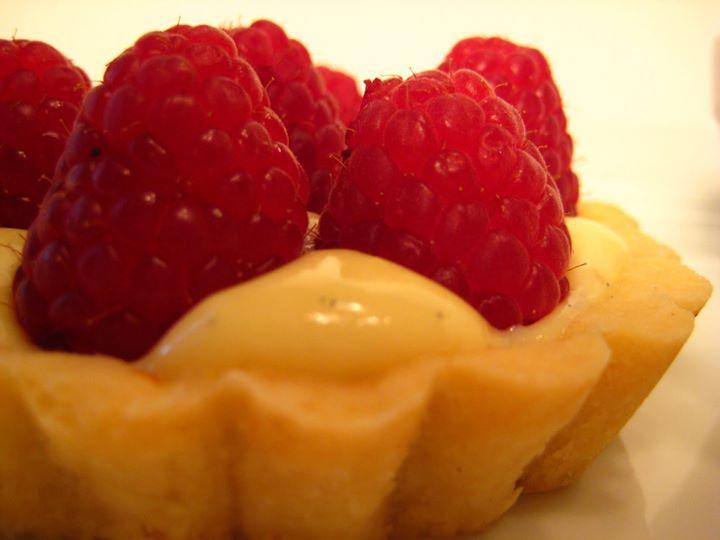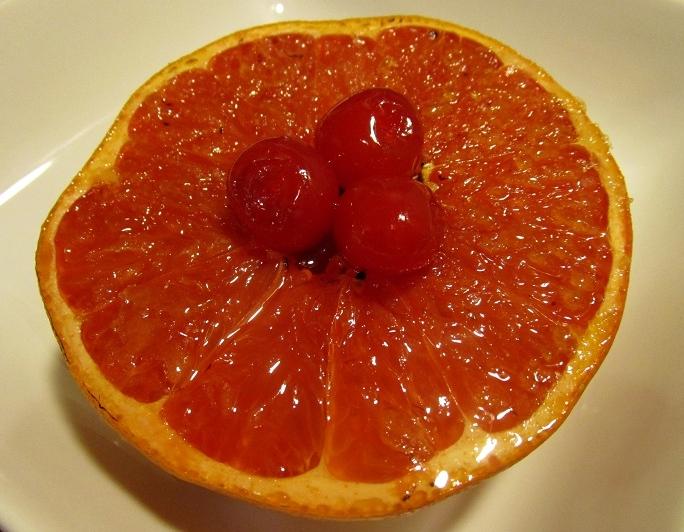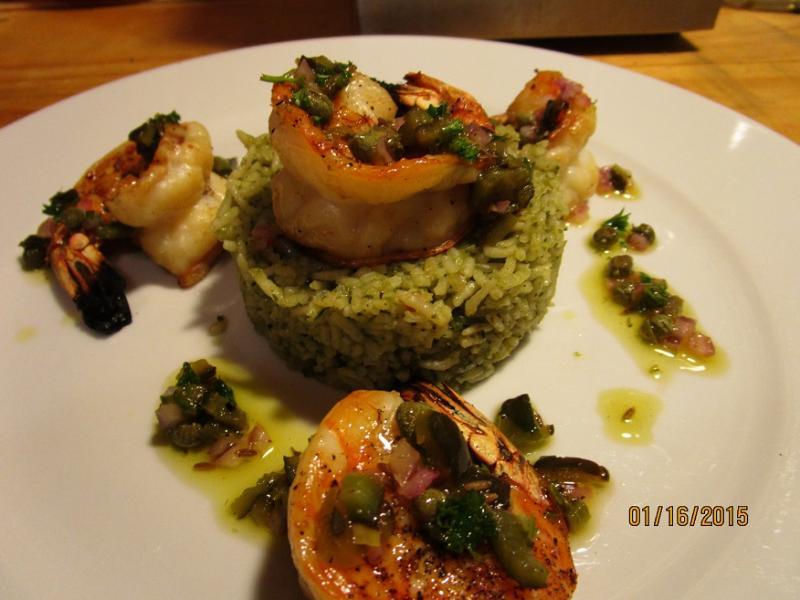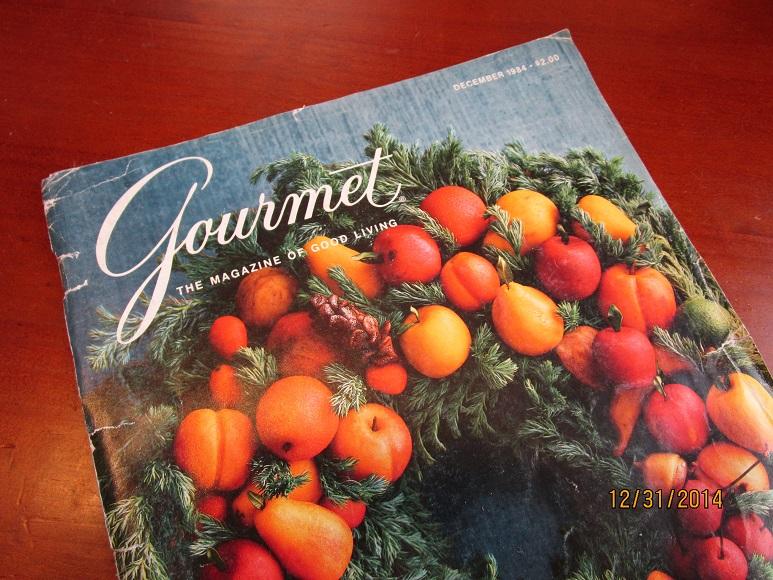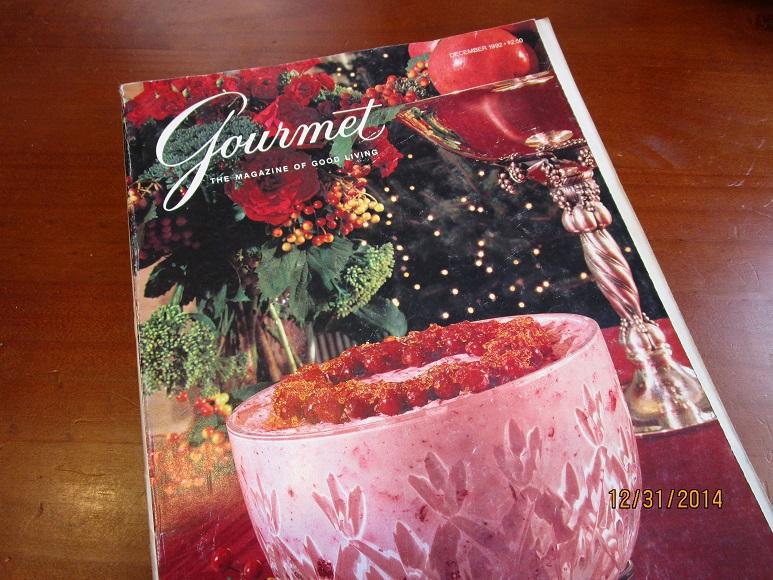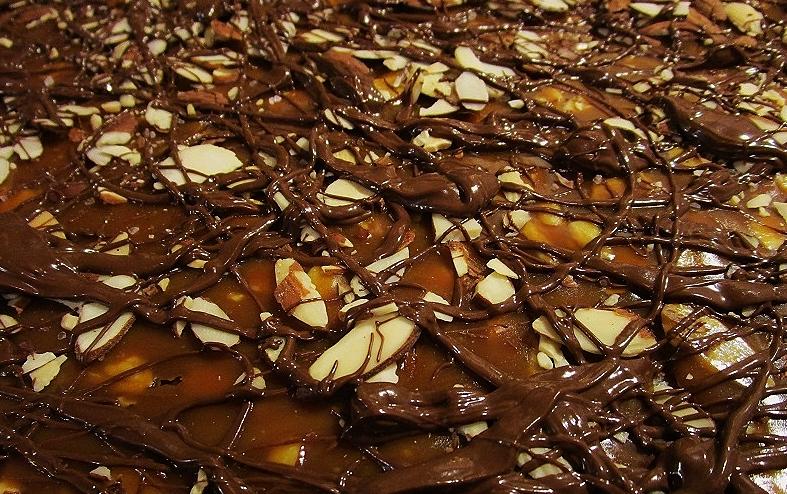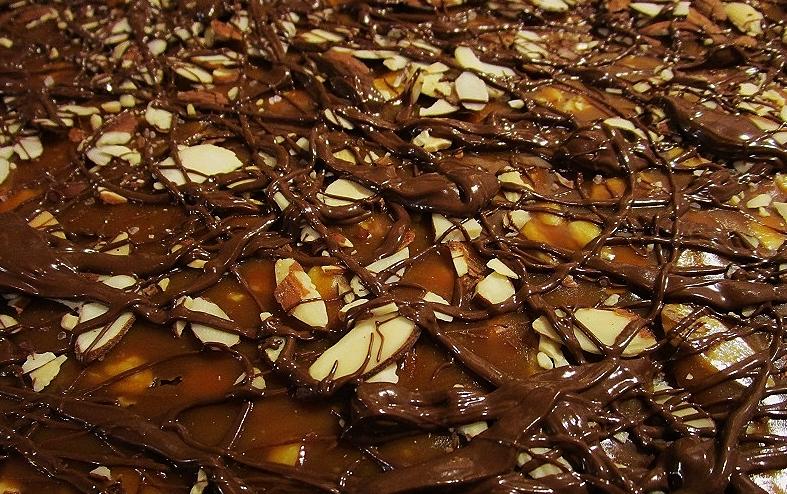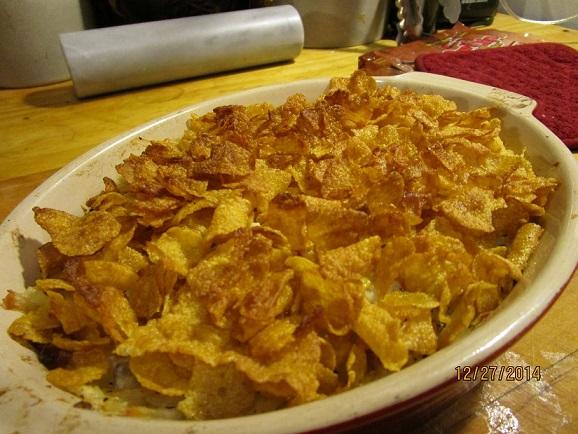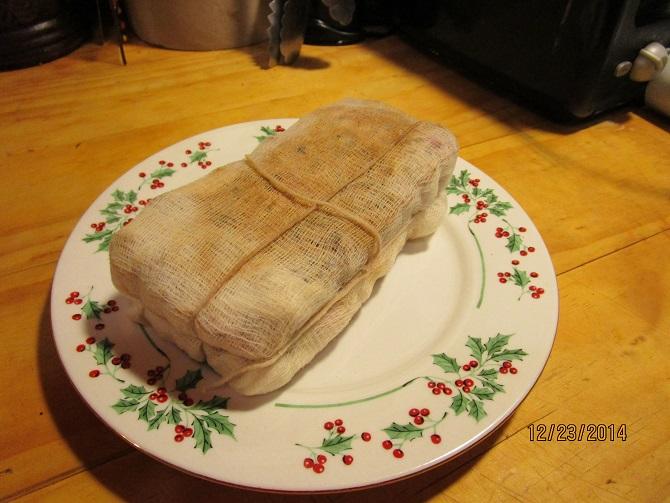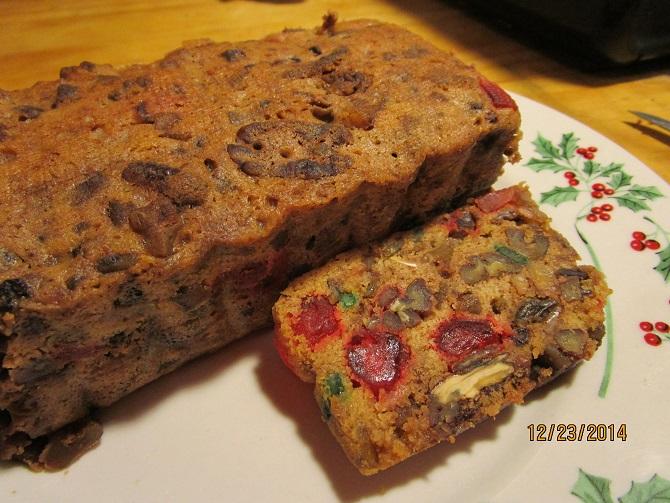-
Posts
5,035 -
Joined
-
Last visited
Content Type
Profiles
Forums
Store
Help Articles
Everything posted by David Ross
-
Thanks everyone. We are certainly off to a great start and I love all of the suggestions, combinations of flavors and textures that we're discussing. I for one love to have cooks give me tips on how to enhance my dishes. I'm starting off with a dessert from Alain Ducasse, (I know shudder at the thought I'm taking a stab at a 3-Star Michelin dessert). "Tartlette au Citron et Agrumes, Chips d'Orange," or Lemon Tartlets with Orange Chips. The dish is in "The Flavors of France" by Ducasse. The recipe reads simple enough--a sweet pastry shell encasing a lemon filling and garnished with fresh orange, lime, grapefruit and clementine segments. The tartelette is crowned by "orange chips," which are paper-thin slices cooked in a simple syrup then baked and dried in the oven. My only change is to add some type of chocolate sauce. I'm taking it slow on this one, starting with a practice run at the orange chips. I'm going to test my contraption of a fine mesh screen over a cookie rack for the orange slices. (I once proposed a similar screen for pizza but the invention company sniffed their noses at my invention). Ducasse calls for laying the slices on parchment, but that doesn't allow for air to breathe underneath so I'm not sure if it is the best method. (Of course, a 3-Star Pastry Chef has no doubt tried the technique and is laughing at my feeble attempt to do otherwise). We'll see how I manage. The French have a way of telling you a dish is just a few simple ingredients--then they bring forth the creation of a master.
-
I should have gotten photos of the packages of chocolate I found. And let me start by saying I'm obvious a chocolate novice. One of the packages said "Bittersweet" and others said "Dark" or "Milk" and so on. That's what peaked my interest as to the flavor differences with bittersweet. I've tasted what I was told was bittersweet chocolate and I thought it would be a good possibility with citrus fruits. I'm doing a sweet pastry tart shell with a lemon filling then garnished with different candied citrus fruit peels. I thought a chocolate sauce would work well with it.
-
I'm starting to put together my plans for my first citrus dish but I need some suggestions. Does bittersweet chocolate work better with citrus fruits than say dark chocolate? Or is bittersweet chocolate to harsh against oranges and grapefruits? Secondly, one of the garnishes is an "orange crisp." Basically an orange slice coated in sugar and baked in the oven. The recipe calls for putting the slices directly on parchment paper, but wouldn't that inhibit the underside from "crisping?" Would it be better to place the orange slices over a fine screen to allow air circulation during baking?
-
Honestly I don't spend much time washing citrus. I love the combination of a good piece of fatty pork paired with oranges. And I really like your Italian cake. Would you serve that with ice cream, sorbet or maybe ricotta?
-
I love the concept and flavors in your dish. I bought some quail just last week so you've given me some inspiration.
-
Heidi that all sounds so delicious and refreshing.
-
I'm going to have to buy myself a lemon tree.
-
That is really beautiful meat. I got lucky today and one of my employees brought me some venison steaks.
-
Anything is on the table during a Cook-off so that means whole fruit, fruit segments or fruit juice. Whatever your recipe calls for. Part of the fun of the Cook-Off's is how we use the ingredient in different ways.
-
What Mother served back in the 60's and it is still delicious. I start with a good dusting of powdered sugar and broil that. Then a layer of granulated sugar, broiled, and a second and third! The result is a crispy shield over that "pink" grapefruit. By the way, for sake of the photo prop there is a fourth maraschino cherry in the center of the fruit. Now that's livin.
-
Last Fall we debuted our Apple Cook-Off and we were not disappointed. From Gravensteins to Granny Smith, Red Delicious, Golden Delicious, Braeburn, Northern Spy and Pink Lady, we presented you with Apple Springrolls, Apple Butter, Apple Tartlets, Roast Pork with Apples, Apple and Chestnut Stuffing and a concoction of Apple Juice, Apple Cider and Kentucky Bourbon Whiskey. (Click here http://forums.egulle...cook-off-index/ for the complete eG Cook-Off Index). Apples are a worthy fruit no doubt, but today we enter into a more passionate and exotic realm of fruit cookery with the launch of eG Cook-Off #68: Citrus Fruits. Late January is the peak of the citrus season. At least it is up here in the Pacific Northwest, where nary a blood orange or key lime ever drops from a local tree. This time of year our markets are groaning with huge orbs of Texas grapefruit, pommelos from Mexico, oranges from Florida and exotic citrus flown in from far-flung Asian ports. Our neighbors to the South, the agri-wonderland of California, delivers mandarins, minneolas and blood oranges to Spokane within just a few days of being plucked from the tree. And I can’t get enough. I’ll never forget the huge grapefruits, larger than two fists, that Mother would serve us for breakfast. She indulged our sweet tooths by showering the cut halves of fruit with sugar. We never had to struggle with scooping out the meaty supremes. Like a fine surgeon, Mother cut the fruit precisely so we’d be able to maneuver every tangy, sweet segment using the serrated silver spoon handed down by my Grandmother. I imagine my Grandmother Edna May Pink serving freshly squeezed grapefruit juice in small, hand-cut crystal glasses as a “first-course” at her ladies' bridge club luncheons. Or maybe a simple dessert course of a broiled half grapefruit studded with a candied cherry and served in a wide crystal goblet, the little silver spoon to the side. Oh, the memories of grapefruit. One fondly dreams of the warm, boozy, classic French “Baba Au Rhum” surrounded by a center of “glace' oranges” and decorated with tiny, crisp, candied tangerine leaves to close the curtain on a grand feast at L'atelier de Joel Robuchon in Las Vegas. I long for a suckling baby pig, no more than 12 pounds, turning ever so slowly on the rotisserie spit over glowing embers of white oak, the sweet scent of a pineapple-tangerine glaze dripping onto the coals as the crackling, golden skin shines. For our Cook-Off, I’m thinking of starting with a lemon souffle recipe that was served during the reign of Edward VII. Citrus fruits were rare at the time and even the overly indulgent Edwardians considered them expensive, only to be served on important occasions. It's that time my friends. You have resolved to lose weight in the New Year. To eat better and to exercise. For a cook, that means challenging oneself to exercise creativity in the kitchen using a fruit that decidedly brings energy and good health. So off you go. Begin crafting your dish, create a shopping list and present us with "fruits" of your labors. Welcome to eG Cook-Off #68: Citrus Fruits. Broiled Grapefruit-
-
Thanks. I always appreciate both kudos and questions about my dishes. I did use roasted poblanos. Also into the "green" element was zuchinni, cilantro, parsley and chives. Then charred garlic and charred onion. All that went into the food processor with water to make a paste. The rice is first sautéed in oil, the green mixture added in and then more water. I did the traditional cooking method of starting it at a boil on the stovetop, then covering the pot and simmering the rice for about 15 minutes. Then covering the pot with a cloth towel, the lid back on, the heat off and finishing cooking for another 15 minutes. I thought it was a bit soupy, but I've got it chilled in the fridge and will use it for fried rice tonight!
-
My first stab at green rice. Pretty good but next time it needs some hotter chiles. Served with broiled prawns and a roasted poblano-caper vinaigrette-
- 581 replies
-
- 10
-

-

What food-related books are you reading? (2004 - 2015)
David Ross replied to a topic in Food Media & Arts
This one sounds lovely. I actually used recipes that old on occasion. But aside from the recipes, it gives one an insight into the history and tradition of cuisines and the burdens one had back in that day. Imagine, they knew how to puree peas without a food processor. -

What food-related books are you reading? (2004 - 2015)
David Ross replied to a topic in Food Media & Arts
The Holidays aren't over in my kitchen. In fact, I still have these beloved editions still sitting on a chair in the living room with any number of sticky notes attached to pages of delicious recipes. And the restaurant reviews, oh those dearly missed, beautifully written restaurant reviews. Gourmet, how we miss you. -
I think the historical family ties to fruitcake is fascinating. My Grandmother, Mildred Ross, was a very good baker and candy maker. Her family, the Slayton's, trekked from Missouri over the Oregon Trail ca. 1865 to stake a land claim in Prineville, Oregon. I remember my Father telling me how his Mother would send him fruitcake while he was fighting in Europe during the War. Great Aunt Bertie May Pink is the woman I look to for inspiration when it comes to fruitcake. Bertie was my Grandfather Ralph Pink's Sister. We're not sure, but we think their last name "Pink" was actually an abbreviation of a longer Russian name. We know they left Russia in the 1880's to escape the persecution of Jews by the Russian government at the time. The Pink's eventually landed in sheep country in Southern Idaho, building a wool and pelt trading company in Twin Falls, Idaho. I've made many a fruitcake over the years, but I just can't come close to the cakes that Aunt Bertie made. And I suspect she kept that bottle of left over brandy for a little nip here and there.
-

Your Daily Sweets: What are you making and baking? (2014)
David Ross replied to a topic in Pastry & Baking
Here's the recipe for the Almond Butter Crunch- 2 cups unsalted butter 2 cups granulated sugar 4 tbsp. water 4 tbsp. light corn syrup 3/4 cup slivered almonds 3/4 cup sliced almonds 12oz. milk chocolate Coarse sea salt Line two baking trays with parchment paper, then lightly spray the parchment with non-stick cooking spray. Heat the oven to 400. Spread the slivered almonds over a separate baking tray. Spread the sliced almonds over a separate baking tray. Toast the almonds in the oven until they just start to brown, about 12 minutes. Melt the butter in a deep saucepan over medium-high heat. Add the sugar, water and corn syrup. Now you have to be patient and let the candy mixture cook. Don't increase the heat as the candy may burn. You'll need to use a candy thermometer and let the candy cook to the hard crack stage at 305. Once it reaches 305, remove the pan from the heat and stir in the slivered almonds then immediately pour the candy onto the parchment lined baking trays. You should have enough candy to cover 1 full tray and then 1/2 of a second tray. Let the candy cool completely. Once the candy is cooled, sprinkle the sliced almonds over the top of the candy. I'm not experienced with melting chocolate, so I use the easy way out and melt it in the microwave just to the point of consistency where I can drizzle the chocolate over the candy and almonds. I use a wire whisk dipped in the chocolate to create the mixed pattern over the candy. Certainly not something you'd probably learn in confectionary school but it seems to work o.k. The chocolate basically works as a glue to adhere the almonds. Sprinkle the candy with coarse sea salt. Let the chocolate cool and harden before wrapping and packaging. -

Your Daily Sweets: What are you making and baking? (2014)
David Ross replied to a topic in Pastry & Baking
I could also call it "Jackson Pollock's ode to Toffee." -

Your Daily Sweets: What are you making and baking? (2014)
David Ross replied to a topic in Pastry & Baking
I rarely post here, mainly because I'm the once a year candy maker and the stuff I send to family and friends pales in comparison to some of the beautiful confections I see showcased here. But I do visit regularly to learn from all of you. This is what I call almond butter crunch-- basically a deconstructed home version of Almond Roca. -
Oh boy, just wait until I take that to work for breakfast. My employees will be most jealous.
-
Hash Brown Casserole--a great dish on a Holiday morning that feeds a crowd. I use the basic recipe from Mrs. Dell's hashbrowns and then I add my own touch to the casserole. This year I added cooked ham, sometimes I'll add pork sausage. (This isn't a sophisticated dish so I haven't tried it with foie gras or poached quails eggs). I think the best part is the topping-corn flakes drenched in butter.
-
I haven't made a fruitcake in a couple of years. Not because I've lost my taste for fruitcake, but I've had five of them aging in the pantry and haven't had the need to replenish the stock. This year I'll savor two of the older fruitcakes, (one of the devils got his photo taken this afternoon, and replenish them with newly baked cakes. My best estimate is the older cakes are the young age of five. Five years is actually quite young for a fruitcake. My Great Aunt Bertie Pink wouldn't serve a fruitcake under the age of ten. And she didn't buy the booze for her fruitcake. She would send her Brother, my Grandfather Ralph Pink, down to the liquor store. A proper lady would never show her face in a liquor emporium. This fruitcake is based on a recipe from the Great Northern Railroad Company and served onboard their luxury streamliner the Empire Builder that travelled between Seattle and Chicago. (You'll find the recipe earlier in this thread). I wrap the fruitcake in cheesecloth and store them in a covered container placed in the back of the pantry cupboard. I slog the cakes with booze, typically rum, spiced rum or bourbon, every few months. I don't use specific dates or exact measurements when aging the cakes. A few tablespoons of rum on this one, that last shot of Maker's Mark on that one. Trust me, if you don't care for fruitcake, I know you will not have favorable comments for these photos. Those of us who list fruitcake at the top tiers of our food preferences fully understand that we're the butt of many jokes at Holiday parties. A warm slice of fruitcake with a good dollop of hard sauce and a warmed brandy and Bob's your Uncle.
-
Boy I sure would like recipes for the filling in your Moroccan and curried chicken nibbles.
-
What a great idea for elk, my favorite game meat
-
Here are the basics for the hot crab dip. Just general guidelines, add less crab if you like. I use whole milk or half and half to thin the consistency. 2 8oz. packages cream cheese. 8 oz. sour cream (you need this to add some tang) 1 tsp. dry mustard About 2 tbsp. Worcestershire sauce 1 tbsp. fresh squeezed lemon juice About 2 tsp. Tabasco sauce 3 cloves garlic, crushed Milk to thin consistency of dip Meat from 1 fresh Dungeness crab, cooked Salt and Pepper to taste Some people add cheese and then bake this in a casserole, another tip for a hot holiday nibble that you can put out on the buffet table and keep it warm.

